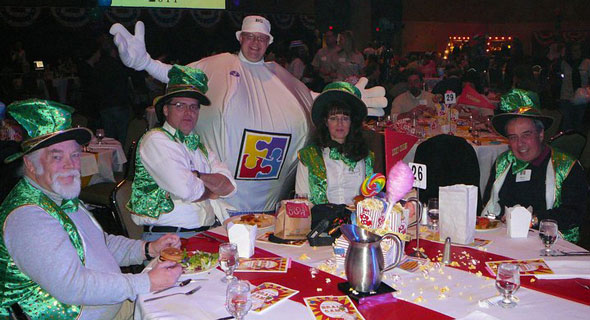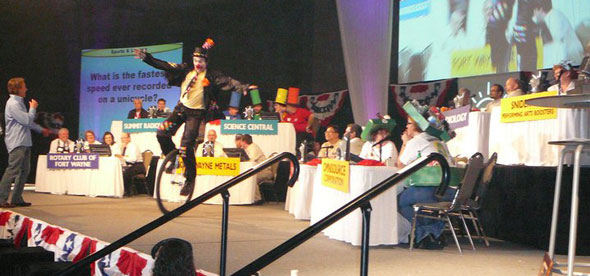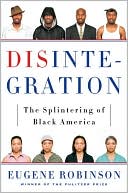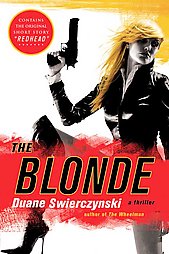 I love fish. Growing up, we never had fish at home. But when we’d go out to eat, I would often order fish. Back then, the choices in white fish were usually haddock, perch, or cod. It was typically breaded and fried.
I love fish. Growing up, we never had fish at home. But when we’d go out to eat, I would often order fish. Back then, the choices in white fish were usually haddock, perch, or cod. It was typically breaded and fried.
Today, restaurants often have cod, but not haddock or perch. But now there’s tilapia. Tilapia everywhere. And I really like tilapia. Good flavor, nice texture. I’ve been buying parmesan-crusted tilapia filets at Fresh Market. Sautee for a few minutes on both sides, then throw it in the oven for 12 minutes. Delicious.
Back in October, BusinessWeek ran a feature article on tilapia called “From China, the Future of Fish.” They described it as “a bland food product that grows fast and sells cheap.”
Interestingly, about 80% of the tilapia sold in the United States comes from China. Like everything else, I guess. It was quite a fascinating article. Here are some fun facts about tilapia.
- Most tilapia is grown on large fish farms. US fish farmers can’t come close to meeting the demand. Besides, tilapia do better in tropical climates, like Asia and Latin America.
- Tilapia is a fast-growing species of fish. After just a couple months, tilapia is a harvestable 1-2 pounds.
- 80 percent of the frozen tilapia in the U.S. is now imported from China, with restaurants and supermarkets the biggest buyers.
- In 2009 the U.S. imported 404 million pounds of tilapia, up from 298 million in 2005.
- Tilapia is mild in flavor. It doesn’t really have its own flavor. Instead, it takes on the flavor of whatever you put with it. Which is why chefs like it so much–they created its flavor with whatever herbs and spices they use. They consider it very versatile.
- Tilapia, being bland, is good for Americans who don’t like their fish tasting “fishy.”
- Tilapia fish farms tend to be very clean. Since the fish takes on the flavor of whatever’s around it, tilapia grown in muddy, algae-filled ponds end up tasting bad.
- Shrimp is the most popular seafood for Americans. The average American eats 4.1 pounds of shrimp per year.
- Pollack, caught off the coast of Alaska, is the most popular white fish. However, most of it is ground up into fish sandwiches and nuggests for fast-food chains like McDonald’s. You don’t normally eat a pollack filet.
- Until 2002, tilapia didn’t even make the top-ten list of seafood eaten by Americans. Now it has surged ahead of cod and catfish, and is just behind pollack as the most popular white fish in the US.
- A negative: tilapia doeesn’t contain Omega-3 oils, a major health benefit of other fish.
- There are hundreds of tilapia processing plants in China. The Chinese government is aggressive in inspecting and regulating their fish industry, to ensure quality, cleanliness, and safety. But their track record can still be spotty.


 Someone sent this to someone who sent it to someone else who sent it to me and a whole bunch of other people. Now I post it for your enjoyment.
Someone sent this to someone who sent it to someone else who sent it to me and a whole bunch of other people. Now I post it for your enjoyment.























 “Generation Kill” is among the many superb books written by journalists about the Iraq and Afghan wars. Dexter Filkins, David Finkel, Sebastian Junger, John Krakauer, Michael Yon…and now Evan Wright. Though actually, Wright came first, publishing this book in 2004.
“Generation Kill” is among the many superb books written by journalists about the Iraq and Afghan wars. Dexter Filkins, David Finkel, Sebastian Junger, John Krakauer, Michael Yon…and now Evan Wright. Though actually, Wright came first, publishing this book in 2004.
 The New York Times Book Review had a piece on Eugene Robinson’s new book “Distintegration: the Splintering of Black America.” The review noted how Robinson, a Pulitzer Prize winning journalist for the Washington Post–and an African American–divides the African American population into four groups. Coming from a first-class thinker like Robinson, I found this categorizing very interesting.
The New York Times Book Review had a piece on Eugene Robinson’s new book “Distintegration: the Splintering of Black America.” The review noted how Robinson, a Pulitzer Prize winning journalist for the Washington Post–and an African American–divides the African American population into four groups. Coming from a first-class thinker like Robinson, I found this categorizing very interesting. Duane Swierczynski has quite an imagination. His books are unusual, and unpredictable. Such was the case with “The Blonde” (2007).
Duane Swierczynski has quite an imagination. His books are unusual, and unpredictable. Such was the case with “The Blonde” (2007).



